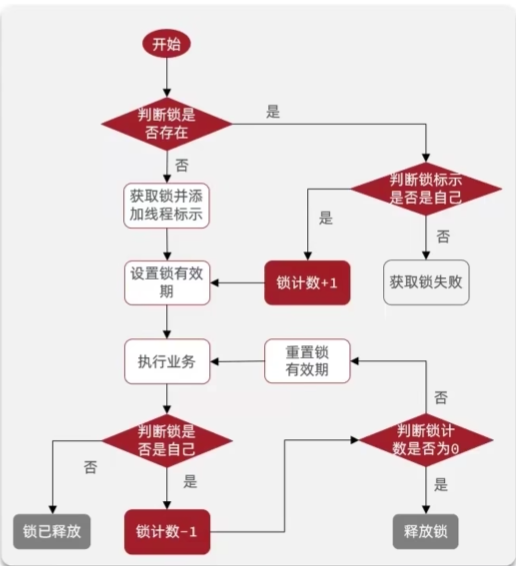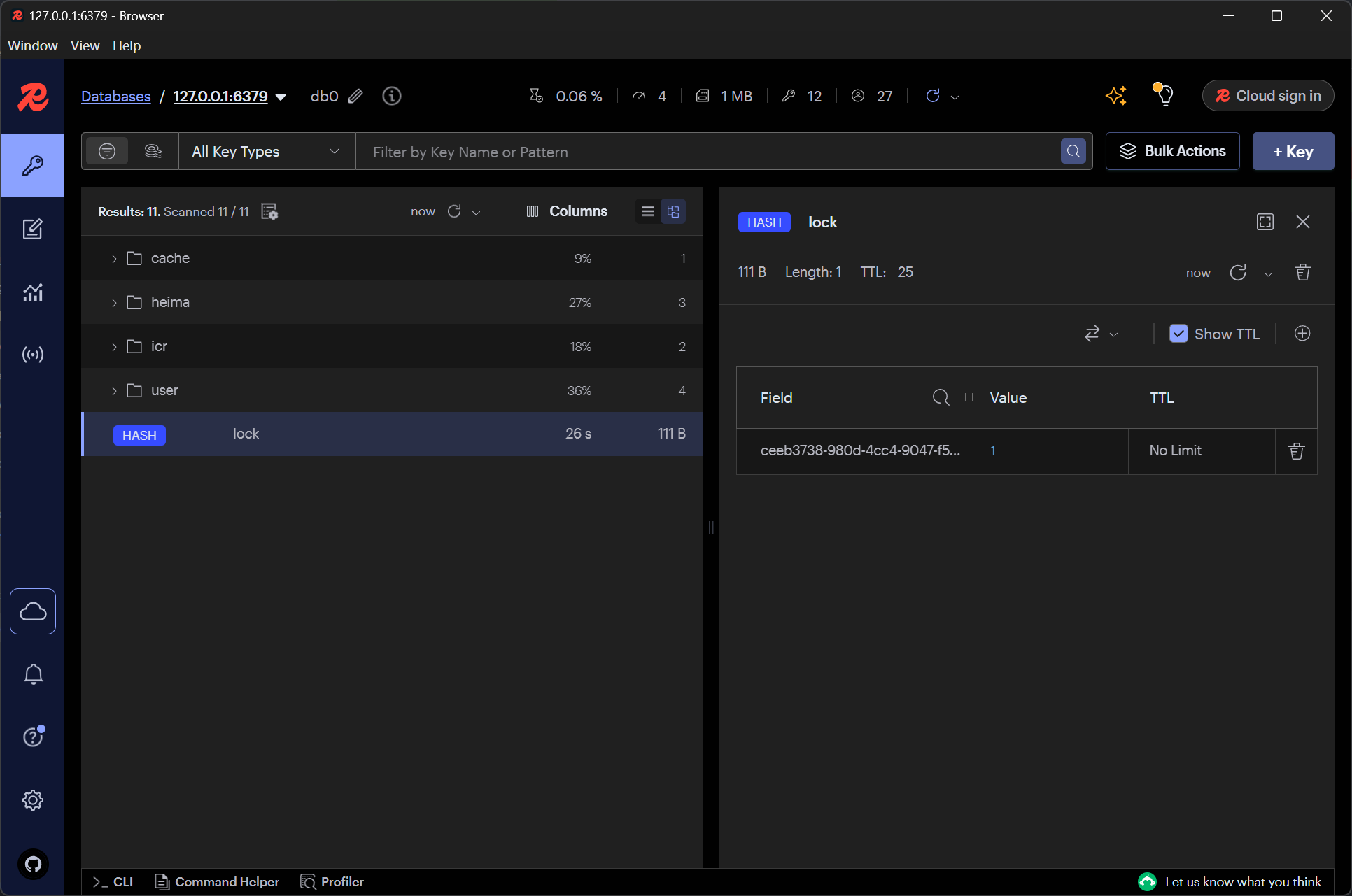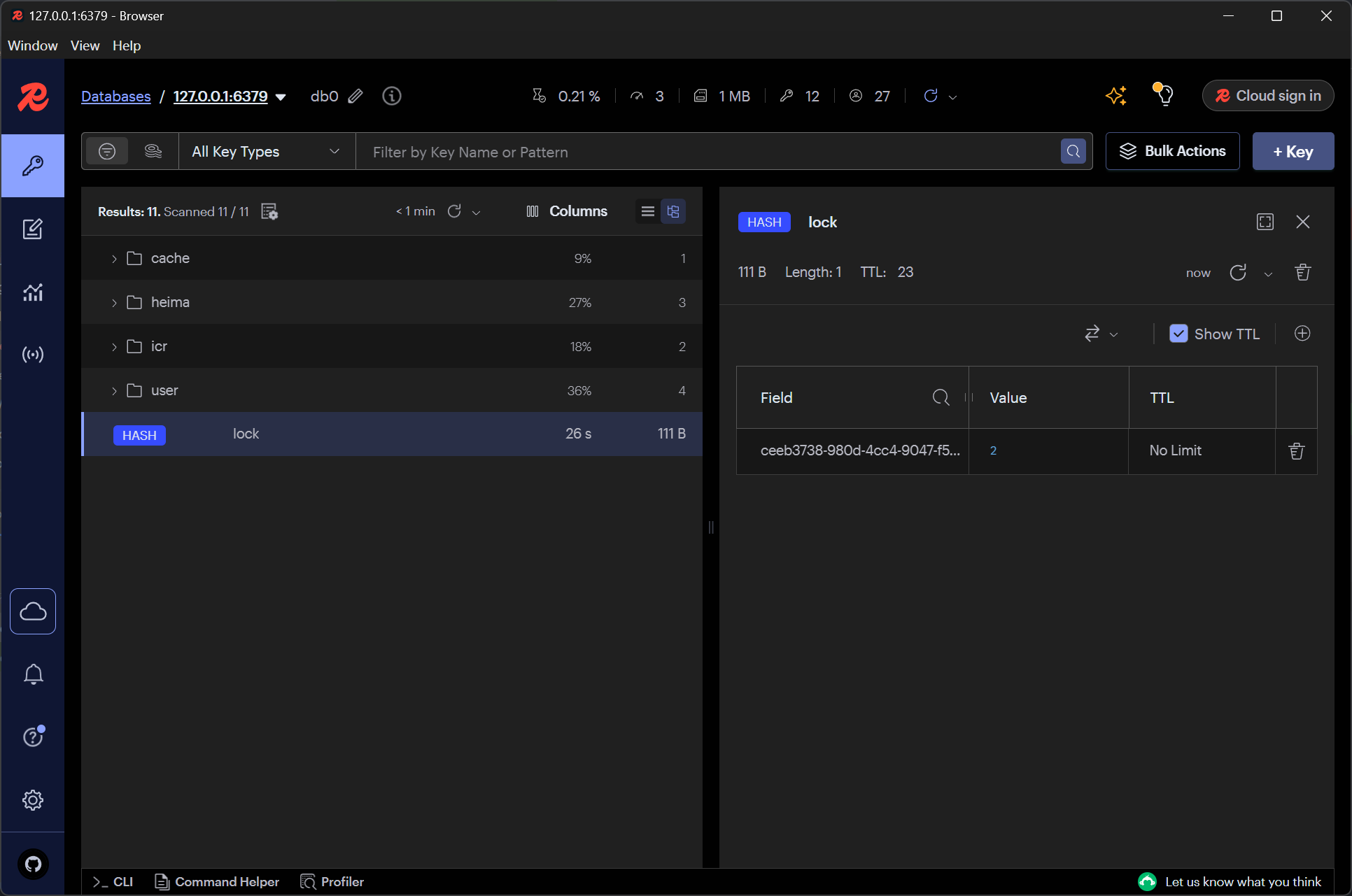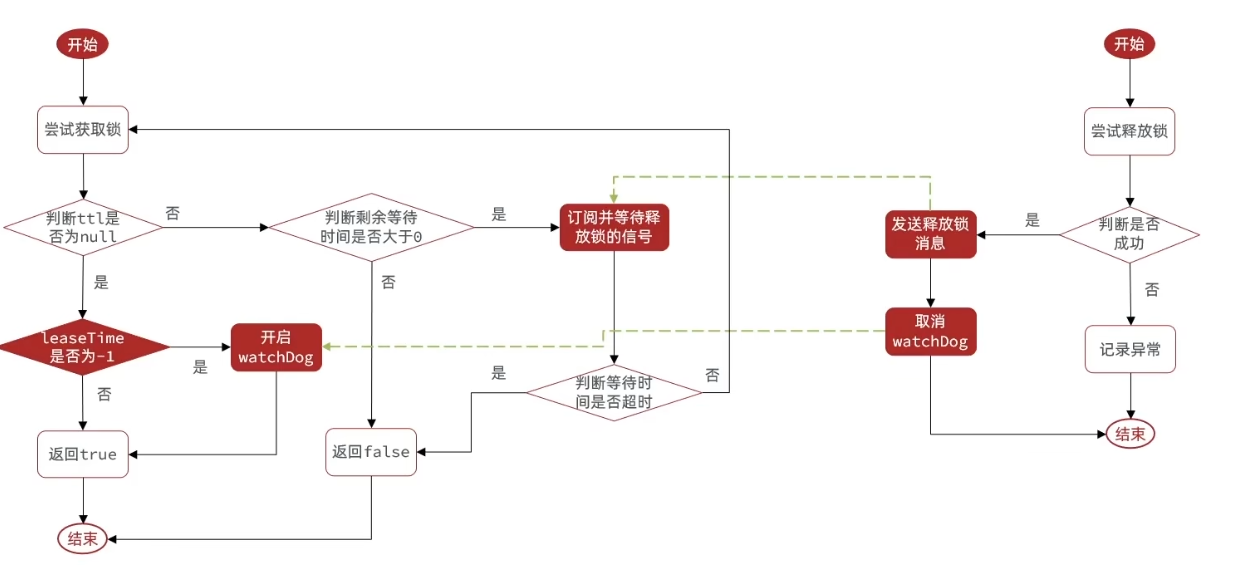基于 setnx 的分布式锁的问题
基于 setnx 的分布式锁在高并发场景下可能会出现问题。setnx 命令用于设置一个键的值,如果键不存在,则设置成功并返回 1;如果键已经存在,则设置失败并返回 0。这种机制在分布式环境中可能导致以下问题:
- 锁的重入性:如果一个线程在持有锁的情况下再次请求锁,可能会导致死锁。
- 锁的重试机制:如果一个线程在持有锁的情况下发生异常,可能会导致锁无法释放,从而导致其他线程无法获取锁。
- 锁的超时释放:如果一个线程在持有锁的情况下长时间未释放锁,可能会导致其他线程无法获取锁。
- 主从一致性:在主从复制的环境中,
setnx 命令可能会导致数据不一致的问题。
解决方案
Redisson 是一个基于 Redis 的 Java 驻内存数据网格框架,提供了分布式锁、分布式集合、分布式队列等数据结构的实现。Redisson 通过 Redis 的原子操作来实现分布式锁,避免了 setnx 的问题。
示例
1
2
3
4
5
6
|
<dependency>
<groupId>org.redisson</groupId>
<artifactId>redisson</artifactId>
<version>3.16.0</version>
</dependency>
|
1
2
3
4
5
6
7
8
9
10
11
12
13
14
15
16
17
18
19
20
|
import org.redisson.Redisson;
import org.redisson.api.RedissonClient;
import org.redisson.config.Config;
import org.springframework.context.annotation.Bean;
import org.springframework.context.annotation.Configuration;
@Configuration
public class RedissonConfig {
@Bean
public RedissonClient redissonClient(){
Config config = new Config();
config.useSingleServer().setAddress("redis://127.0.0.1:6379").setPassword("123456");
return Redisson.create(config);
}
}
|
1
2
3
4
5
6
7
8
9
10
11
12
13
14
15
16
17
18
19
20
21
22
23
24
25
26
27
28
29
30
31
32
33
34
35
36
37
38
39
40
41
42
43
44
45
46
47
48
49
50
51
52
53
54
| ...
@Resource
private RedissonClient redissonClient;
@Override
public Result seckillVoucher(Long voucherId) {
SeckillVoucher voucher = seckillVoucherService.getById(voucherId);
if (voucher.getBeginTime().isAfter(LocalDateTime.now())) {
return Result.fail("秒杀未开始");
}
if (voucher.getEndTime().isBefore(LocalDateTime.now())) {
return Result.fail("秒杀已结束");
}
if (voucher.getStock() < 1) {
return Result.fail("库存不足");
}
Long userId = UserHolder.getUser().getId();
RLock lock = redissonClient.getLock("lock:order:" + userId);
boolean isLock = lock.tryLock();
if (!isLock) {
return Result.fail("不允许重复下单");
}
try {
IVoucherOrderService proxy = (IVoucherOrderService) AopContext.currentProxy();
return proxy.createVoucherOrder(voucherId);
} finally {
lock.unlock();
}
}
...
|
可重入锁

使用 Hash 来存储锁的线程 ID 和重入次数。使用 HSET 命令来设置锁的值,使用 HINCRBY 命令来增加重入次数,使用 EXPIRE 命令来设置锁的过期时间。
| KEY |
VALUE |
| lock:order |
field: thread1 value: 1 |
1
2
3
4
5
6
7
8
9
10
11
12
13
14
15
16
17
18
19
| local key = KEYS[1];
local threadId = ARGV[1];
local releaseTime = ARGV[2];
if (redis.call('exists', key) == 0) then
redis.call('hset', key, threadId, '1');
redis.call('expire', key, releaseTime);
return 1;
end
if (redis.call('hexists', key, threadId) == 1) then
redis.call('hincrby', key, threadId, '1');
redis.call('expire', key, releaseTime);
end
return 0
|
1
2
3
4
5
6
7
8
9
10
11
12
13
14
15
16
17
18
| local key = KEYS[1];
local threadId = ARGV[1];
local releaseTime = ARGV[2];
if (redis.call('HEXISTS', key, threadId) == 0) then
return nil;
end;
local count = redis.call('HINCRBY', key, threadId, -1);
if (count > 0) then
redis.call('EXPIRE', key, releaseTime);
return nil;
else
redis.call('DEL', key);
return nil;
end;
|
使用 Redisson 的可重入锁
1
2
3
4
5
6
7
8
9
10
11
12
13
14
15
16
17
18
19
20
21
22
23
24
25
26
27
28
29
30
31
32
33
34
35
36
37
38
39
40
41
42
43
44
45
46
| class BackApplicationTests {
@Autowired
private RedissonClient redissonClient;
private RLock lock;
@BeforeEach
void setUp() {
lock = redissonClient.getLock("lock");
}
@Test
void method1() {
boolean isLock = lock.tryLock();
if (!isLock) {
log.error("获取锁失败...... 1");
return;
}
try {
log.info("获取锁成功...... 1");
method2();
log.info("执行业务逻辑...... 1");
} finally {
log.info("准备释放锁...... 1");
lock.unlock();
}
}
@Test
void method2() {
boolean isLock = lock.tryLock();
if (!isLock) {
log.error("获取锁失败...... 2");
return;
}
try {
log.info("获取锁成功...... 2");
log.info("执行业务逻辑...... 2");
} finally {
log.info("准备释放锁...... 2");
lock.unlock();
}
}
}
|
在 method1 和 method2 中都获取了同一个锁,Redisson 会自动处理重入锁的逻辑。第一次获取锁时,重入次数为 1,第二次获取锁时,重入次数加 1。释放锁时,Redisson 会判断重入次数是否为 0,如果不为 0,则不会删除锁。
分别在 boolean isLock = lock.tryLock(); 打断点调试,发现:
第一次获取锁时,重入次数为 1

第二次获取锁时,重入次数加 1

当重入次数为 0 时,释放锁
Redisson 分布式锁的原理

可重入
- 使用 Hash 来存储锁的线程 ID 和重入次数。
可重试
- 利用信号量和PubSub功能实现等待、唤醒,获取锁失败的重试机制
超时续约
- 利用 watchDog,每隔一段时间(releaseTime / 3)自动续约锁的过期时间,避免锁的自动释放。



